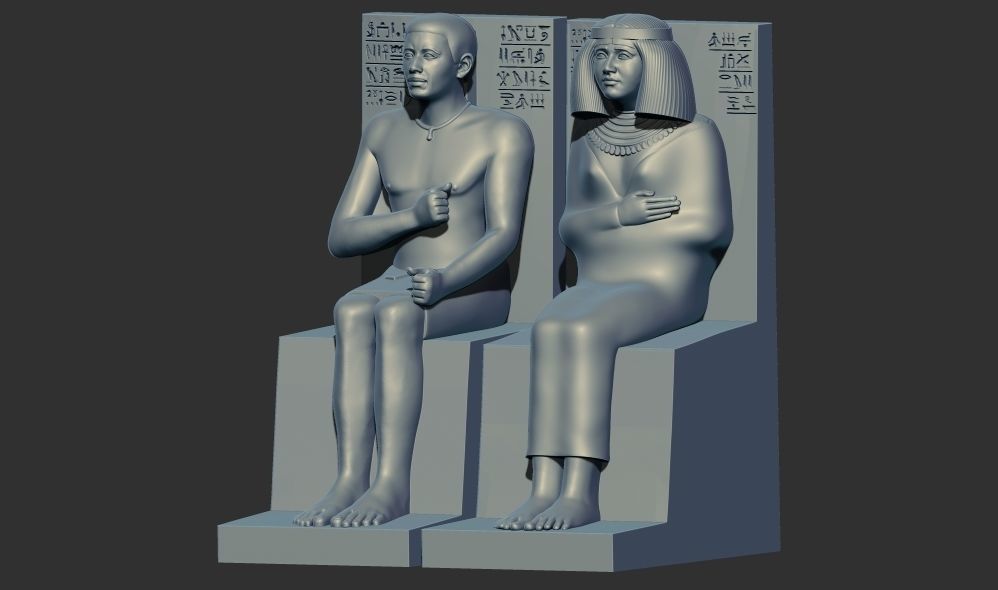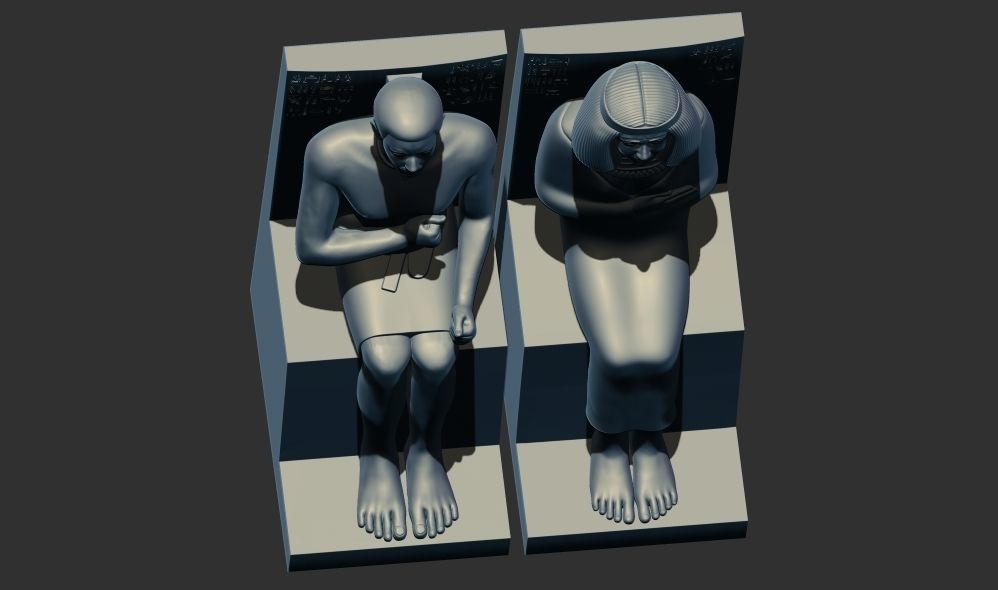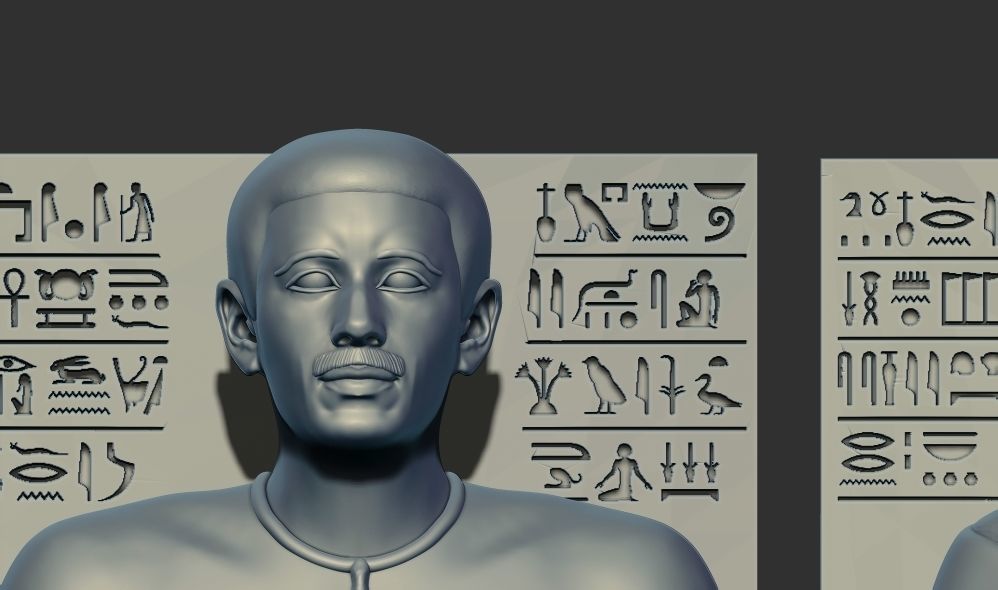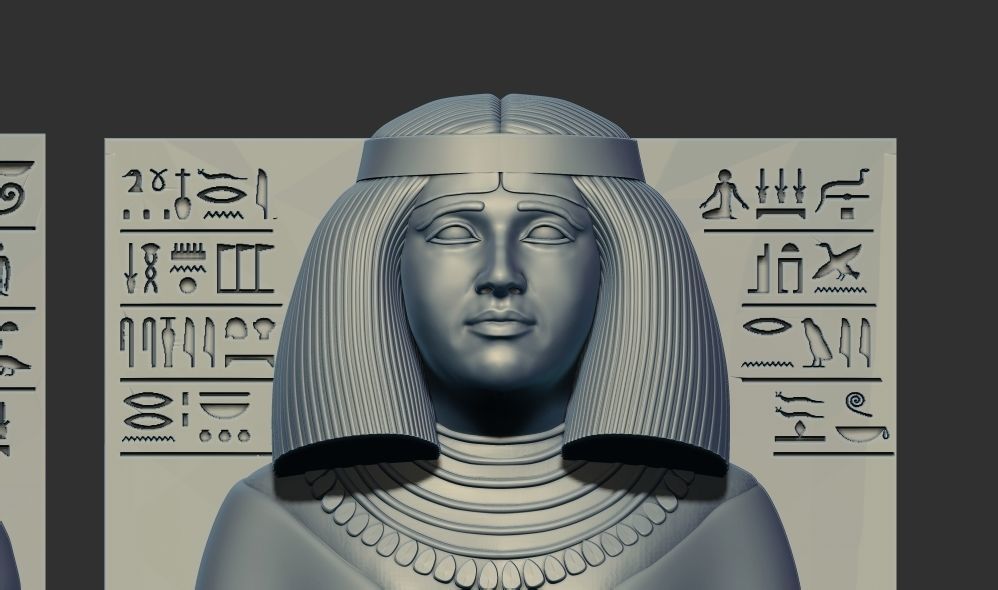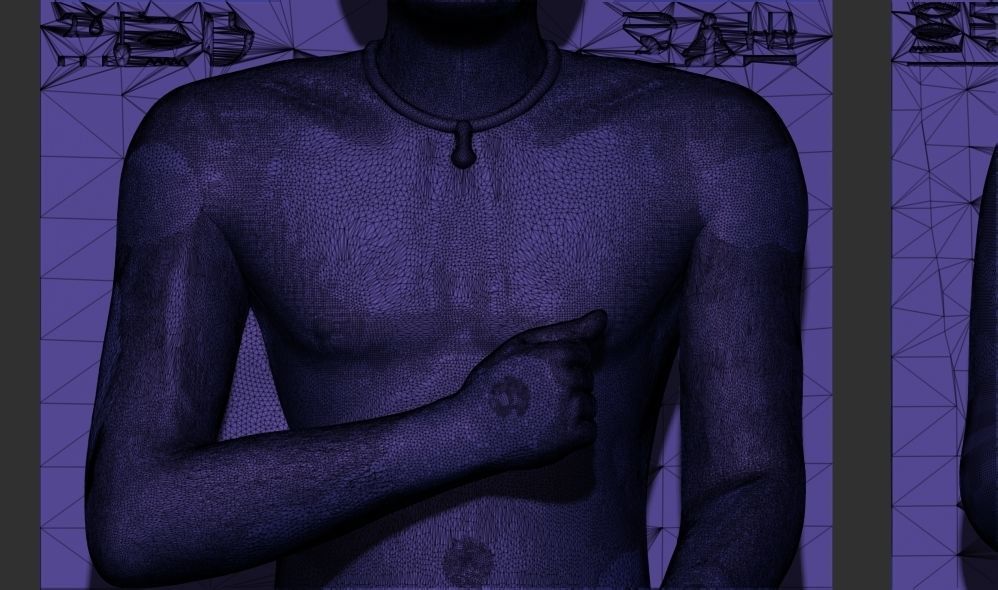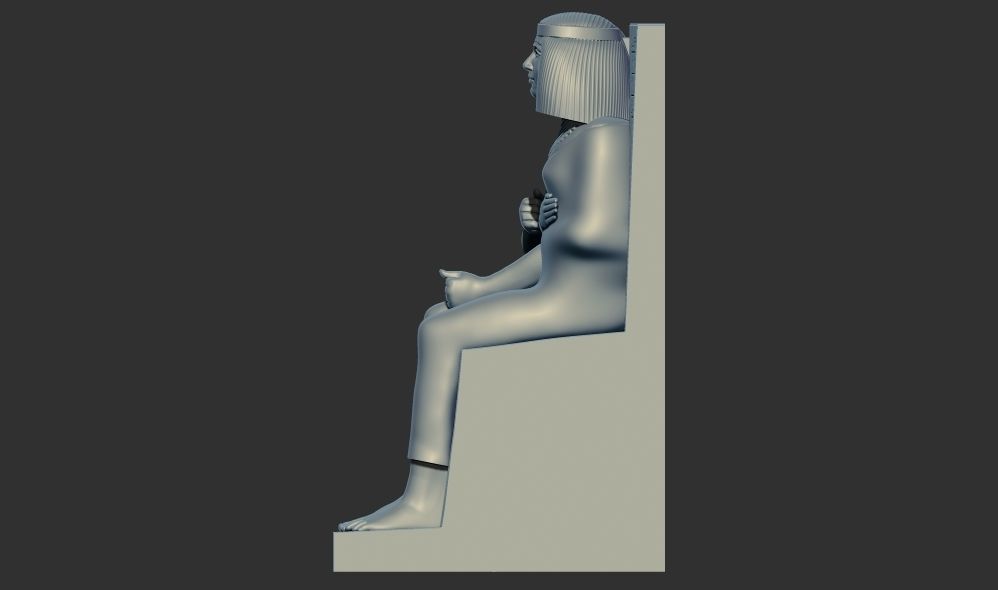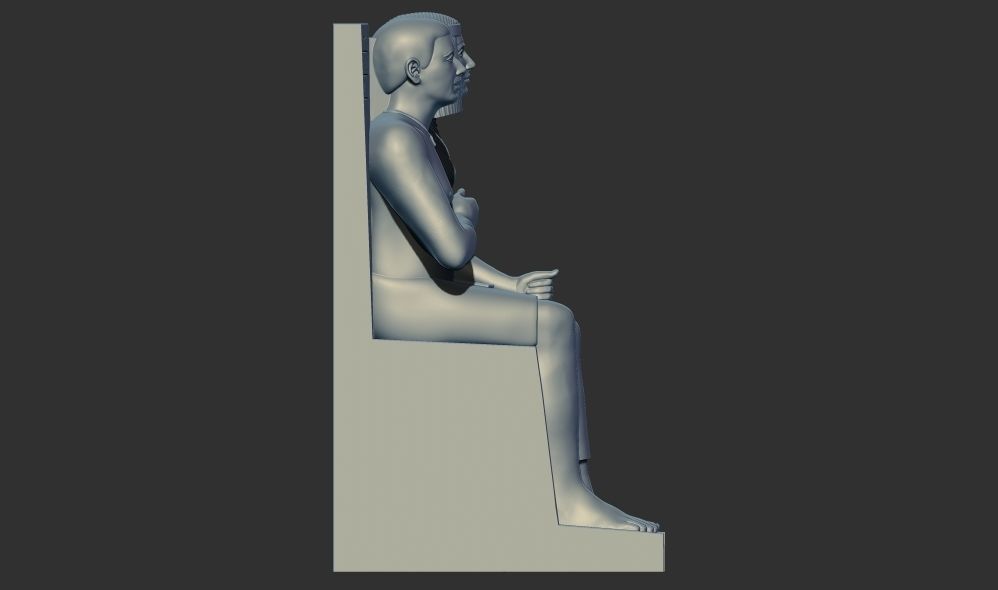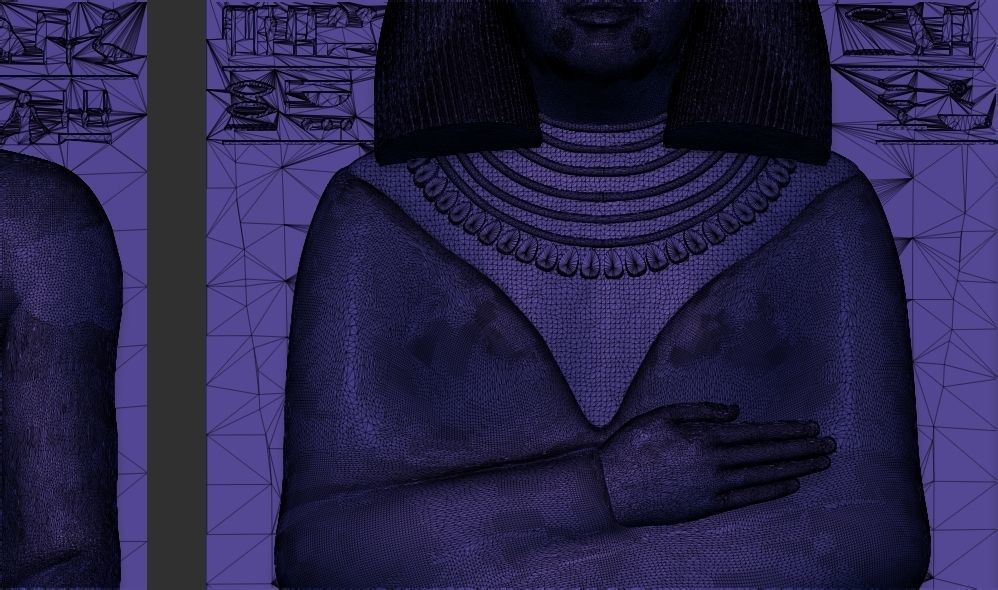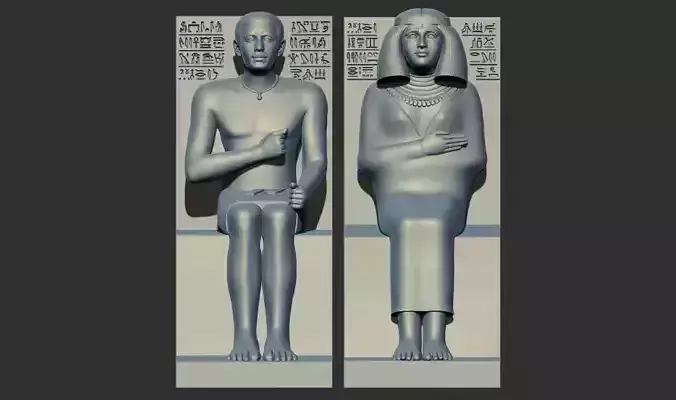
Egyptian Rahotep and Nofret Statue 3d printable model 3D print model
Egyptian Rahotep and Nofret Statue – 3D Printable Model
The Egyptian Rahotep and Nofret Statue – 3D printable model is a faithful recreation of one of the most iconic and historically important statues from Ancient Egypt. This digital 3D model captures the seated figures of Prince Rahotep and his wife, Nofret, who lived during the 4th Dynasty under the reign of Pharaoh Sneferu. Their statues, discovered at Meidum, are some of the most remarkable works of Egyptian sculpture ever found, famous for their lifelike features, vivid paint, and the elegant representation of ancient Egyptian nobility.
By transforming this masterpiece into a 3D printable STL file, collectors, educators, and 3D printing enthusiasts can now bring these figures to life, preserving their beauty and sharing them in homes, classrooms, museums, or private collections.
Historical Background of Rahotep and Nofret
Rahotep was a high-ranking official, often considered a son of Pharaoh Sneferu, and Nofret was his wife, possibly of royal descent. Their statues were discovered in near-perfect condition, with the original paint preserved on the limestone surfaces, showing skin tones, clothing, wigs, and jewelry. The eyes, inlaid with quartz and crystal, gave the statues a lifelike and almost supernatural quality, shocking archaeologists when they were first uncovered.
The 3D printable Rahotep and Nofret Statue model captures this historical importance, offering both accuracy and detail, making it an ideal piece for Egyptian 3D model STL collections and historical study.
Features of the 3D Printable Model
High-resolution STL file optimized for FDM and resin printers.
Accurate detailing of clothing, wigs, thrones, and jewelry.
Printable as individual parts or as a single merged statue.
Scalable to different sizes for display purposes.
Suitable for collectors, educators, and museum-quality replicas.
The design ensures easy slicing and smooth printing, even for hobbyists new to Ancient Egyptian 3D printing models.
Why This Statue is Important for Collectors
Unlike generic pharaoh statues, the Rahotep and Nofret statue represents the nobility and domestic life of the Old Kingdom. It’s a rare depiction of a royal couple seated together, with extraordinary preservation of color and detail. This makes the 3D model not only a decorative piece but also a teaching tool to explain Egyptian art, family structures, and social hierarchy.
Collectors who already own Tutankhamun 3D printable statues, Hatshepsut sphinx STL files, or Ramses II 3D printable figurines will find the Rahotep and Nofret statue a vital addition that enriches any Egyptian-themed collection.
Creative Uses for the 3D Model
Museum Replicas – Recreate one of the most famous artifacts in Egyptian archaeology.
Educational Models – Use in history lessons, cultural exhibits, or art classes.
Home Decoration – A detailed Egyptian statue that adds elegance to any display shelf.
Artistic Projects – Paint the figures to replicate the original vivid colors.
Thematic Dioramas – Combine with other Egyptian STL files like Ushabti 3D printable statues, Amenhotep figurines, or Pharaoh throne models.
Combining Heritage and Modern Technology
This Rahotep and Nofret 3D printable statue demonstrates how modern technology can revive and preserve world heritage. Through 3D printing Egyptian statues, history lovers and artists can engage with ancient art in a hands-on way, whether by printing a small collectible or creating a full-size museum replica.
The high-resolution STL file provides flexibility for scaling and ensures that every detail of the throne, attire, and lifelike faces is preserved. This makes it suitable for ancient Egypt digital archives, pharaoh 3D collections, and even virtual museum VR projects.
Key Advantages of This Model
Bridges ancient history and digital art.
Perfect balance between printability and accuracy.
A unique addition to Egyptian 3D STL statue sets.
Offers a rare portrayal of nobility in family context, unlike solo pharaoh or god statues.
Enhances SEO-driven marketplaces like CGTrader and Cults3D with a distinctive product.
Conclusion
The Egyptian Rahotep and Nofret Statue – 3D printable model is more than just a digital file; it’s a timeless bridge between ancient artistry and modern creativity. With historical accuracy, optimized printability, and cultural significance, this model belongs in every collection of Egyptian 3D printable artifacts.
Whether you are a history enthusiast, a 3D printing hobbyist, or an educator, this model allows you to hold a piece of Egyptian heritage in your hands. By adding the Rahotep and Nofret 3D model STL to your library, you are not only enriching your collection but also celebrating one of the most beautiful and humanistic statues of Ancient Egypt.
Bring the story of Rahotep and Nofret to life—print, display, and share the elegance of Egyptian history through this remarkable 3D printable statue.

